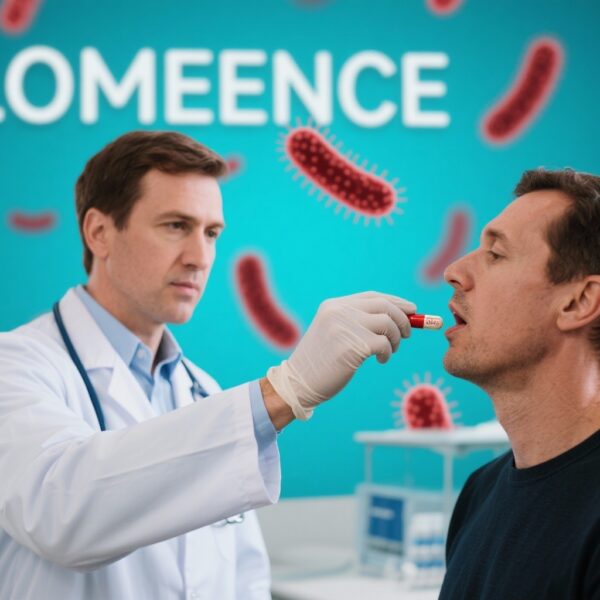Highlight
- A single booster dose of GBS6 approximately two years after primary vaccination is well-tolerated and safe in healthy, non-pregnant adults.
- Booster immunisation elicits robust serotype-specific IgG antibody responses, significantly exceeding those observed after the primary dose.
- Antibody levels wane over two years post-primary immunisation but remain elevated above baseline, supporting durability of response.
- Findings provide a foundation for potential booster strategies in maternal immunisation aiming to protect infants from invasive GBS disease.
Study Background
Group B Streptococcus (GBS) remains a leading cause of invasive bacterial infections in neonates, including sepsis, pneumonia, and meningitis. Maternal immunisation to induce transplacental antibody transfer presents a promising strategy for protecting infants during the vulnerable early life period. A novel hexavalent GBS polysaccharide conjugate vaccine (GBS6) targets six epidemiologically predominant serotypes, aiming to prevent invasive disease in infants by vaccinating women during pregnancy. Prior phase 1/2 trials have demonstrated initial safety and immunogenicity of GBS6 in healthy, non-pregnant adults. Given the recurrent nature of pregnancies and the potential need to maintain or boost maternal antibodies across successive pregnancies, evaluating the safety and immune response to a booster dose in adults is crucial to informing vaccination schedules.
Study Design
This phase 2, open-label extension study was conducted across four sites in the USA, enrolling healthy adults aged 18 to 49 years who had previously received a primary dose of one of six GBS6 formulations approximately two years earlier during the phase 1/2 trial (ClinicalTrials.gov NCT04258995). Participants received a single booster dose of GBS6 containing 20 μg capsular polysaccharide per serotype, formulated with or without an aluminium phosphate (AlPO4) adjuvant consistent with their initial vaccine formulation.
Primary endpoints assessed safety and tolerability via solicited local reactions and systemic events within 14 days post-booster, adverse events (AEs) within one month, and unsolicited serious adverse events (SAEs) or medically attended adverse events (MAEs) up to six months post-vaccination. Secondary immunogenicity evaluations measured serotype-specific IgG geometric mean concentrations (GMCs) and geometric mean fold-rises (GMFRs) in serum one month after versus before booster administration.
Key Findings
Out of 297 participants who completed the base study, 151 received the booster dose (76 with AlPO4, 75 without) and were analyzed for safety. The cohort was predominantly female (75%) and White (83%), with a mean age of 36.7 years.
Safety Profile:
Pain at the injection site was the most frequent local reaction, occurring in 68% of adjuvanted recipients versus 43% of non-adjuvanted recipients; severe pain was rare and only reported in 3% of the adjuvanted group. Systemic events—mostly mild to moderate—were similarly frequent between groups (59% with AlPO4 and 61% without). Unsolicited adverse events were infrequent and comparable across formulations (14% vs 16%). There were no vaccine-related serious adverse events; one SAE of thermal burn was unrelated to vaccination. Medically attended AEs were low and balanced between groups.
Immunogenicity:
Serotype-specific anti-capsular polysaccharide (CPS) IgG concentrations declined over the two years following the primary dose but remained higher than pre-primary dose baselines. Post-booster, antibody levels rose markedly, with GMCs between 6.025 and 60.304 μg/mL at one month—2- to 18-fold higher than after the initial dose. GMFRs ranged from approximately 10- to 59-fold relative to pre-booster levels across all serotypes and formulations, indicating a potent anamnestic response. This robust boosting effect was consistent regardless of AlPO4 adjuvant presence.
Expert Commentary
The observed safety and potent immunogenicity of the GBS6 booster dose are encouraging for maternal vaccination programs. Immunological memory elicited by the primary dose is effectively recalled, significantly amplifying protective antibody levels, which could translate to enhanced neonatal immunity through passive transfer. The tolerability profile aligns with expected mild to moderate reactogenicity characteristic of conjugate vaccines, with no new safety signals identified over extended follow-up.
Sustaining high maternal antibody titres across multiple pregnancies is a pivotal consideration, and these data suggest that timed booster doses could optimize neonatal protection. However, clinical trials directly involving pregnant women are essential to confirm safety, immunogenicity, and transplacental antibody transfer efficacy. Additionally, further investigation is warranted to clarify the optimal timing and frequency of boosting, especially in populations with varied baseline immunity.
Conclusion
This study demonstrates that a single GBS6 booster dose administered approximately two years after the primary dose in healthy, non-pregnant adults is safe and significantly enhances serotype-specific IgG antibody concentrations beyond levels achieved after primary vaccination. Given the critical role of maternal antibodies in preventing neonatal invasive GBS disease, these findings support the development of booster administration strategies for maternal immunisation. Future research should focus on evaluating booster vaccination during pregnancy and determining the longitudinal impact on infant GBS disease prevention.
Funding and Clinical Trials Registration
This study was funded by Pfizer. The trial was registered on ClinicalTrials.gov under the identifier NCT04258995.
References
Jongihlati B, Segall N, Block SL, et al. Safety and immunogenicity of a booster dose of a novel hexavalent group B streptococcus conjugate vaccine in healthy, non-pregnant adults: a phase 2, open-label extension of a phase 1/2 randomised controlled trial. Lancet Infect Dis. 2025 Oct;25(10):1138-1148. doi:10.1016/S1473-3099(25)00216-6. Epub 2025 Jun 13. PMID: 40523378.



